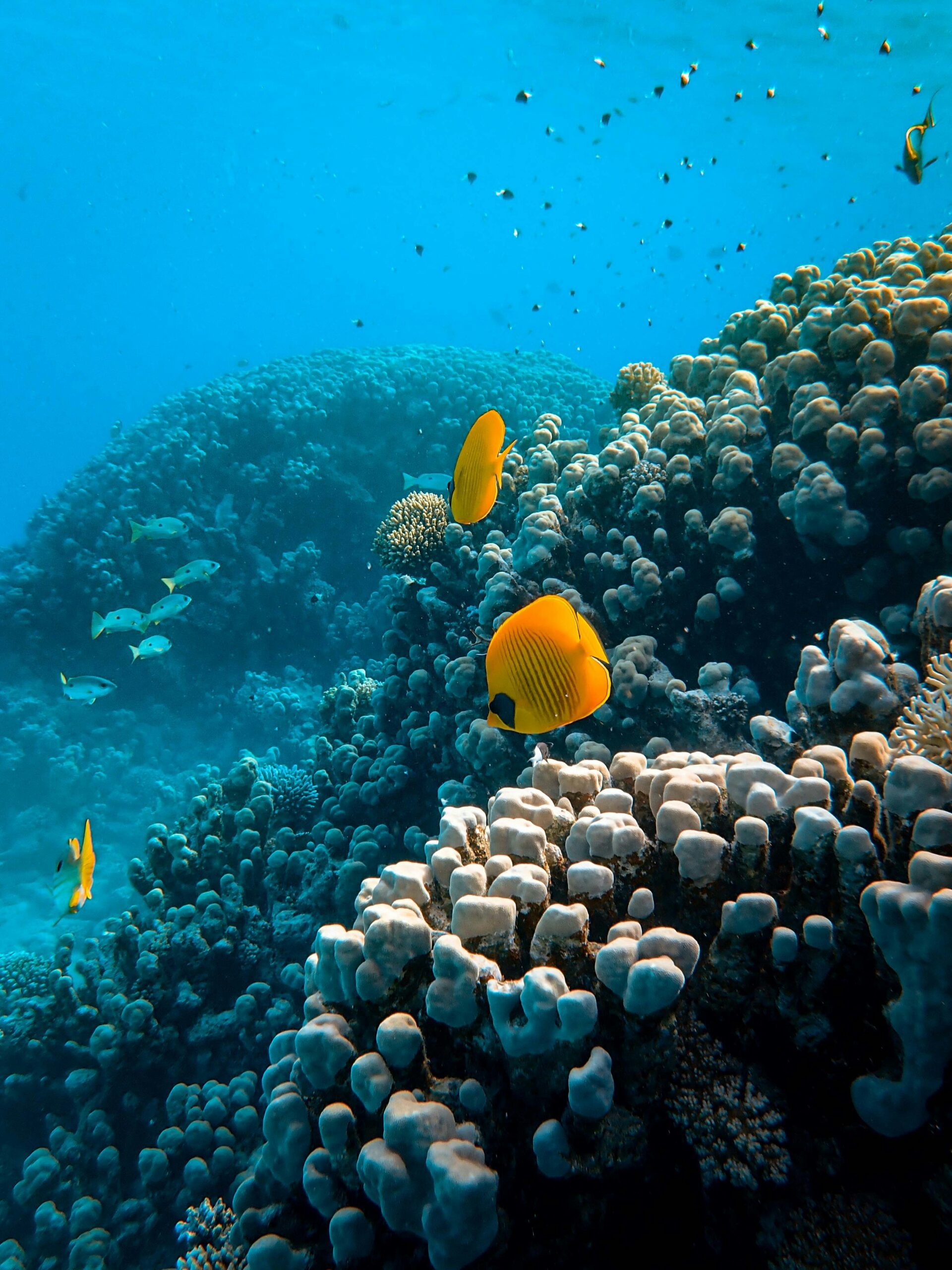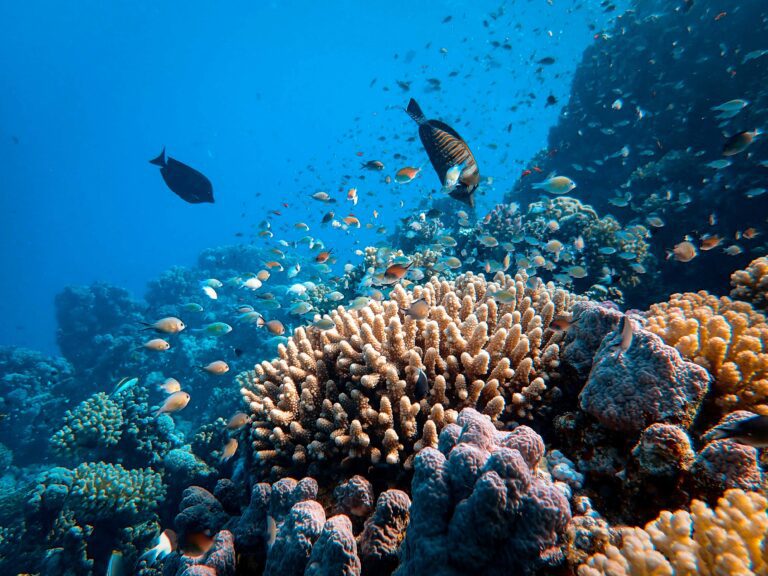Coral reefs are among the most vibrant and diverse ecosystems on our planet, teeming with life and providing essential services to millions of people worldwide. However, these underwater wonderlands are under threat from a phenomenon known as coral bleaching. This process, triggered by environmental stressors, has become increasingly prevalent in recent years, posing a significant risk to the delicate balance of marine ecosystems. In this article, we will explore the causes and consequences of coral bleaching, as well as the ongoing efforts to protect and preserve these invaluable natural habitats.
Elevated Sea Temperatures
Coral bleaching is a phenomenon primarily driven by elevated sea temperatures, which has become increasingly prevalent due to climate change. When ocean temperatures rise beyond a certain threshold, corals expel the symbiotic algae living within their tissues, known as zooxanthellae. These algae provide corals with essential nutrients through photosynthesis, and their expulsion results in the loss of coloration, hence the term “bleaching.”
The primary cause of elevated sea temperatures is the accumulation of greenhouse gases, such as carbon dioxide, in the Earth’s atmosphere. These gases trap heat, leading to a rise in global temperatures, including those of the oceans. Human activities, such as burning fossil fuels and deforestation, contribute significantly to the release of greenhouse gases.
As sea temperatures continue to increase, coral reefs are subjected to prolonged periods of stress, making them more susceptible to bleaching events. Additionally, the frequency and severity of bleaching episodes have escalated in recent decades, posing a significant threat to coral reef ecosystems worldwide.
Pollution
Pollution, both chemical and physical, poses a significant threat to coral reefs and contributes to coral bleaching. Chemical pollutants such as pesticides, fertilizers, and petroleum products can disrupt the delicate balance of coral reef ecosystems. These pollutants can enter the ocean through runoff from agricultural activities, industrial discharges, and improper waste disposal.
One of the most detrimental forms of pollution affecting coral reefs is nutrient pollution. Excessive nutrients, particularly nitrogen and phosphorus, can lead to algal overgrowth, which shades corals and inhibits their ability to photosynthesize. This deprives corals of essential nutrients and contributes to their weakened state, making them more susceptible to bleaching.
Physical pollutants such as plastics and other debris can directly harm coral reefs by smothering them or causing abrasions. Additionally, sedimentation resulting from activities such as coastal development and deforestation can cloud the water, reducing light penetration and impeding coral growth.
Efforts to mitigate pollution and improve water quality are crucial for protecting coral reefs and reducing the incidence of coral bleaching. Implementing better waste management practices, promoting sustainable agriculture, and enforcing regulations to reduce industrial pollution are essential steps in safeguarding these vulnerable ecosystems.
Ocean Acidification
Ocean acidification, another consequence of increased carbon dioxide emissions, exacerbates the effects of coral bleaching. When carbon dioxide dissolves in seawater, it forms carbonic acid, leading to a decrease in pH levels. This shift in acidity can impede the ability of corals to build their calcium carbonate skeletons, essential for reef formation and growth.
As ocean acidification progresses, corals may experience reduced calcification rates, making them more vulnerable to physical damage from storms and erosion. Additionally, acidification can weaken the structural integrity of coral skeletons, making them more susceptible to breakage and mortality.
The impacts of ocean acidification are not limited to corals alone but also affect other marine organisms that rely on calcium carbonate for shell and skeleton formation, such as mollusks and certain plankton species. Disruption of these foundational species can have cascading effects throughout the marine food web, further compromising the health and resilience of coral reef ecosystems.
Addressing the root causes of ocean acidification requires concerted global efforts to reduce carbon emissions and mitigate climate change. Transitioning to renewable energy sources, enhancing carbon sequestration efforts, and implementing strategies to adapt to changing ocean chemistry are essential for protecting coral reefs and marine biodiversity in the face of this ongoing threat.

Loss of Biodiversity
Coral bleaching has profound impacts on marine biodiversity, posing a significant threat to the intricate ecosystems supported by coral reefs. As one of the most diverse ecosystems on the planet, coral reefs provide habitat and sustenance for a vast array of marine species, including fish, invertebrates, and algae. When corals bleach and subsequently die, these habitats are lost, leading to a cascade of ecological consequences.
The loss of coral reefs results in the displacement and decline of numerous species that depend on them for shelter, food, and breeding grounds. This disruption can lead to shifts in species distribution and abundance, altering the balance of marine ecosystems. Additionally, many species that rely on coral reefs for their survival are endemic, meaning they are found nowhere else on Earth. The loss of these unique species can have far-reaching implications for global biodiversity.
Coral reefs also play a crucial role in supporting fisheries, providing essential nursery habitats for commercially important fish species. The decline of coral reefs due to bleaching can lead to a decrease in fish populations, affecting the livelihoods of coastal communities that depend on fishing for sustenance and income. Furthermore, the loss of biodiversity resulting from coral bleaching can compromise the resilience of marine ecosystems, making them more susceptible to further degradation from other stressors, such as pollution and overfishing.
Economic Implications
The economic implications of coral bleaching are far-reaching, affecting industries such as tourism, fisheries, and coastal development. Coral reefs contribute billions of dollars annually to the global economy through tourism-related activities such as diving, snorkeling, and recreational fishing. These activities rely heavily on the aesthetic value and biodiversity of coral reefs, which are diminished by bleaching events.
When coral reefs bleach and degrade, the appeal of tourist destinations declines, leading to losses in revenue for businesses and governments dependent on tourism. Coastal communities that rely on coral reef ecosystems for their livelihoods also face economic hardships as fish populations decline and valuable habitats are lost. Furthermore, the erosion of coral reefs can increase the vulnerability of coastal areas to erosion and storm damage, requiring costly mitigation and adaptation measures.
The economic impacts of coral bleaching extend beyond local and regional scales, affecting global markets for seafood and tourism. As coral reefs decline, the availability of seafood may decrease, leading to higher prices and increased pressure on alternative sources of protein. Additionally, the loss of coral reefs as natural barriers against coastal erosion and storm surges can result in significant infrastructure damage and loss of property value in coastal communities.
Disruption of Ecosystems
Coral bleaching disrupts marine ecosystems in profound ways, affecting not only coral reefs but also the myriad species that depend on them for survival. Coral reefs are complex ecosystems characterized by intricate interactions between corals, fish, invertebrates, and algae. When corals bleach and die, these interactions are disrupted, leading to cascading effects throughout the ecosystem.
One of the most immediate consequences of coral bleaching is the loss of habitat and food sources for countless marine species. Many fish and invertebrates rely on coral reefs for shelter, breeding grounds, and access to food, and the loss of coral habitats can lead to declines in their populations. This, in turn, can impact higher trophic levels, including predators and scavengers, further destabilizing marine food webs.
The disruption of marine ecosystems resulting from coral bleaching can have profound ecological implications, including decreased resilience to environmental stressors and reduced ecosystem services such as nutrient cycling and carbon sequestration. Additionally, the loss of biodiversity associated with coral reef degradation can compromise the ability of ecosystems to adapt and recover from disturbances, posing long-term challenges for conservation and management efforts.
Coral Reef Restoration Projects
Coral reef restoration projects play a vital role in mitigating the impacts of coral bleaching and promoting the recovery of degraded reef ecosystems. These initiatives involve various techniques aimed at restoring coral populations, enhancing reef resilience, and rebuilding habitat complexity. One common approach is coral transplantation, where fragments of healthy corals are cultivated in nurseries and then strategically transplanted onto degraded reefs.
Another restoration method involves the installation of artificial structures, such as coral nurseries and reef balls, to provide substrate for coral settlement and growth. These structures mimic natural reef habitats and can help accelerate the recovery of degraded areas. Additionally, innovative techniques, such as coral microfragmentation and larval propagation, are being developed to scale up restoration efforts and improve efficiency.
Coral reef restoration projects often involve collaboration between scientists, conservation organizations, governments, and local communities. Community engagement is particularly crucial, as local knowledge and support are essential for the success and long-term sustainability of restoration initiatives. By involving communities in monitoring, maintenance, and stewardship activities, these projects can foster a sense of ownership and empower communities to take an active role in reef conservation.
Marine Protected Areas
Marine protected areas (MPAs) are essential tools for conserving coral reefs and mitigating the impacts of coral bleaching. These designated areas aim to conserve marine biodiversity, protect critical habitats, and sustainably manage marine resources. By establishing regulations and zoning restrictions, MPAs help reduce anthropogenic stressors such as overfishing, pollution, and habitat destruction, which can exacerbate the effects of coral bleaching.
MPAs provide refuge for coral reefs and support the recovery of degraded ecosystems by allowing populations to replenish and habitats to regenerate. They also serve as important research and monitoring sites, providing valuable data on coral reef health and resilience. Additionally, MPAs can contribute to the resilience of coral reef ecosystems by protecting genetic diversity and promoting connectivity between different reef populations.
Effective MPA management requires collaboration between governments, stakeholders, and local communities to ensure compliance with regulations and enforcement of protected areas. Community involvement in MPA planning and management can enhance social acceptance and support for conservation efforts while also promoting sustainable resource use and livelihood opportunities for coastal communities.
Public Awareness and Education
Public awareness and education are essential components of coral reef conservation efforts, helping to foster appreciation for these fragile ecosystems and inspire action to protect them. Educational initiatives aimed at raising awareness about the importance of coral reefs, the threats they face, and the actions individuals can take to support their conservation are crucial for promoting behavior change and sustainable practices.
School programs, community workshops, and outreach events are effective platforms for engaging diverse audiences and instilling a sense of stewardship for coral reefs. By providing opportunities for hands-on learning and experiential activities, these initiatives can empower individuals to make informed decisions and adopt environmentally friendly behaviors in their daily lives.
In addition to raising awareness, public education efforts can also mobilize support for policy change, conservation funding, and community-based initiatives. By highlighting the interconnectedness of human well-being and coral reef health, these campaigns can galvanize public support for sustainable development practices and the establishment of protected areas.
Collaboration between governments, non-governmental organizations, academia, and the private sector is essential for designing and implementing effective public awareness and education campaigns. By working together to develop targeted messaging, leverage resources, and reach diverse audiences, stakeholders can maximize the impact of their efforts and inspire collective action for coral reef conservation.
VIDEO CREDITS NATIONAL GEOGRAPHICS



